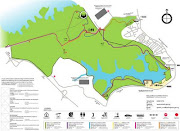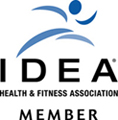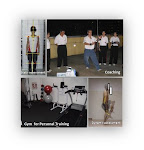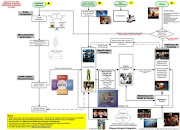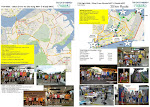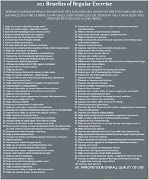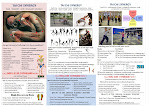
The warm up activities are a crucial part of any exercise regime or sports training. The importance of a structured warm up routine should not be under estimated when it comes to the prevention of sports injury.
An effective warm up has a number of very important key elements. These elements, or parts, should all be working together to minimize the likelihood of sports injury from physical activity.
Warming up prior to any physical activity does a number of beneficial things, but primarily its main purpose is to prepare the body and mind for more strenuous activity. One of the ways it achieves this is by helping to increase the body's core temperature, while also increasing the body's muscle temperature. By increasing muscle temperature you're helping to make the muscles loose, supple and pliable.
An effective warm up also has the effect of increasing both your heart rate and your respiratory rate. This increases blood flow, which in turn increases the delivery of oxygen and nutrients to the working muscles. All this helps to prepare the muscles, tendons and joints for more strenuous activity.
Keeping in mind the aims or goals of an effective warm up, we can then go on to look at how the warm up should be structured.
Obviously, it's important to start with the easiest and most gentle activity first, building upon each part with more energetic activities, until the body is at a physical and mental peak. This is the state in which the body is most prepared for the physical activity to come, and where the likelihood of sports injury has been minimized as much as possible. So, how should you structure your warm up to achieve these goals?
There are four key elements, or parts, which should be included to ensure an effective and complete warm up. They are:
1. The general warm up;
2. Static stretching;
3. The sports specific warm up; and
4. Dynamic stretching.
All four parts are equally important and any one part should not be neglected or thought of as not necessary. All four elements work together to bring the body and mind to a physical peak, ensuring the athlete is prepared for the activity to come. This process will help ensure the athlete has a minimal risk of sports injury.
Lets have a look at each element individually.
1.) General warm upThe general warm up should consist of a light physical activity. Both the intensity and duration of the general warm up (or how hard and how long), should be governed by the fitness level of the participating athlete. Although a correct general warm up for the average person should take about five to ten minutes and result in a light sweat.
The aim of the general warm up is simply to elevate the heart rate and respiratory rate. This in turn increases the blood flow and helps with the transportation of oxygen and nutrients to the working muscles. This also helps to increase the muscle temperature, allowing for a more effective static stretch. Which bring us to part two.
2.) Static stretchingStatic stretching is a very safe and effective form of basic stretching. There is a limited threat of injury and it is extremely beneficial for overall flexibility. During this part of the warm up, static stretching should include all the major muscle groups, and this entire part should last for about five to ten minutes.
Static stretching is performed by placing the body into a position whereby the muscle, or group of muscles to be stretched is under tension. Both the opposing muscle group (the muscles behind or in front of the stretched muscle), and the muscles to be stretched are relaxed. Then slowly and cautiously the body is moved to increase the tension of the muscle, or group of muscles to be stretched. At this point the position is held or maintained to allow the muscles and tendons to lengthen.
This second part of an effective warm up is extremely important, as it helps to lengthen both the muscles and tendons which in turn allows your limbs a greater range of movement. This is very important in the prevention of muscle and tendon injuries.
The above two elements form the basis, or foundation for a complete and effective warm up. It is extremely important that these two elements be completed properly before moving onto the next two elements. The proper completion of elements one and two, will now allow for the more specific and vigorous activities necessary for elements three and four.
3.) Sport specific warm upWith the first two parts of the warm up carried out thoroughly and correctly, it is now safe to move onto the third part of an effective warm up. In this part, the athlete is specifically preparing their body for the demands of their particular sport. During this part of the warm up, more vigorous activity should be employed. Activities should reflect the type of movements and actions which will be required during the sporting event.
4.) Dynamic stretchingFinally, a correct warm up should finish with a series of dynamic stretches. However, this form of stretching carries with it a high risk of injury if used incorrectly. It should really only be used under the supervision of a professional sports coach or trainer. Dynamic stretching is more for muscular conditioning than flexibility and is really only suited for professional, well trained, highly conditioned athletes. Dynamic stretching should only be used after a high level of general flexibility has been established.
Dynamic stretching involves a controlled, soft bounce or swinging motion to force a particular body part past its usual range of movement. The force of the bounce or swing is gradually increased but should never become radical or uncontrolled.
During this last part of an effective warm up it is also important to keep the dynamic stretches specific to the athletes particular sport. This is the final part of the warm up and should result in the athlete reaching a physical and mental peak. At this point the athlete is most prepared for the rigors of their sport or activity.
Stretching is one of the most under-utilized techniques for improving athletic performance, preventing sports injury and properly rehabilitating sprain and strain injury. Don't make the mistake of thinking that something as simple as stretching won't be effective.
For an easy-to-use, quick reference guide of 135 clear photographs of every possible stretching exercise, for every major muscle group in your body, get a copy of The Stretching Handbook. You'll also learn the benefits of flexibility; the rules for safe stretching; and how to stretch properly.
Click here to learn more about The Stretching Handbook.The above information forms the basis of a complete and effective warm up. As individual, you must become responsible for assessing your own goals and adjusting the warm up accordingly.
Copyright © 2008 The Stretching Institute™Article by Brad Walker. Brad is a leading stretching andsports injury consultant with nearly 20 years experiencein the health and fitness industry. For more free articleson stretching, flexibility and sports injury, subscribe toThe Stretching & Sports Injury Report by visitingThe Stretching Institute.
.jpg)
.jpg)





